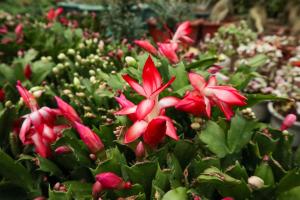How to Care for Black Goldfish Plant Potted
The black goldfish plant, also known as Guppy Plant or Nematanthus, is a popular indoor plant that features unique black and orange blooms. However, to keep the plant thriving, it requires proper care and maintenance. Here are some essential tips for caring for a black goldfish plant potted:
Light and Temperature Requirements
Black goldfish plants thrive in indirect, bright light conditions. They prefer to be placed near east-facing or south-facing windows, where they can receive bright but not direct sunlight. If exposed to too much direct sunlight, the plant can become scorched or damaged. On the other hand, if the plant is kept in a low-light area, it may not bloom optimally.
The temperature requirements for the black goldfish plant are between 60 and 85 degrees Fahrenheit. It is important to keep the plant away from drafty areas, as well as air conditioning and heating vents.
Watering and Humidity
Watering is crucial for the black goldfish plant care. The plant prefers to be kept moist but not waterlogged, as excessive moisture can lead to root rot. Water the plant when the topsoil appears to be dry to the touch. Make sure the soil drains properly, and avoid leaving standing water in the pot's saucer.
The black goldfish plant requires a moderately humid environment. You can mist the plant regularly with a water-filled spray bottle or place a humidifier nearby. This will help prevent the leaves from drying out and help the plant thrive.
Soil and Fertilizer
The black goldfish plant prefers well-draining soil that is rich in organic matter. A mixture of peat moss, perlite, and vermiculite works well. When repotting, make sure the new pot is only slightly larger than the previous one. This will prevent the soil from retaining too much moisture and causing root rot.
The plant benefits from regular feeding with a balanced, water-soluble fertilizer. Fertilize the plant every two weeks during the growing season, which is usually from spring to fall, and reduce feeding during the winter months. Always follow the package's instructions to avoid overfeeding, which can damage the plant.
Pruning and Propagation
Pruning helps to keep the black goldfish plant neat and tidy. To encourage branching, pinch off the tips of the stem. You can also remove old or dead leaves and stems to keep the plant looking its best.
The black goldfish plant is relatively easy to propagate. To propagate the plant, take a cutting of about 4 inches long, remove the lower leaves, and place it in a pot with a moist potting mix. Keep the cutting in a warm, humid environment until new growth appears.
Pest and Disease Control
The black goldfish plant is susceptible to pests such as whiteflies, spider mites, and mealybugs. To control the pests, you can use insecticidal soap or neem oil. Disease is rare in black goldfish plants, but overwatering can lead to root rot. If you notice the plant's leaves becoming yellow and mushy, reduce watering and repot the plant in well-draining soil.
In conclusion, the black goldfish plant is a unique and beautiful indoor plant that is relatively easy to care for when provided with proper light, water, and humidity. By following these tips, you can help your black goldfish plant thrive and flourish in your home or office.

 how many times do yo...
how many times do yo... how many planted tre...
how many planted tre... how many pine trees ...
how many pine trees ... how many pecan trees...
how many pecan trees... how many plants comp...
how many plants comp... how many plants can ...
how many plants can ... how many plants and ...
how many plants and ... how many pepper plan...
how many pepper plan...






























